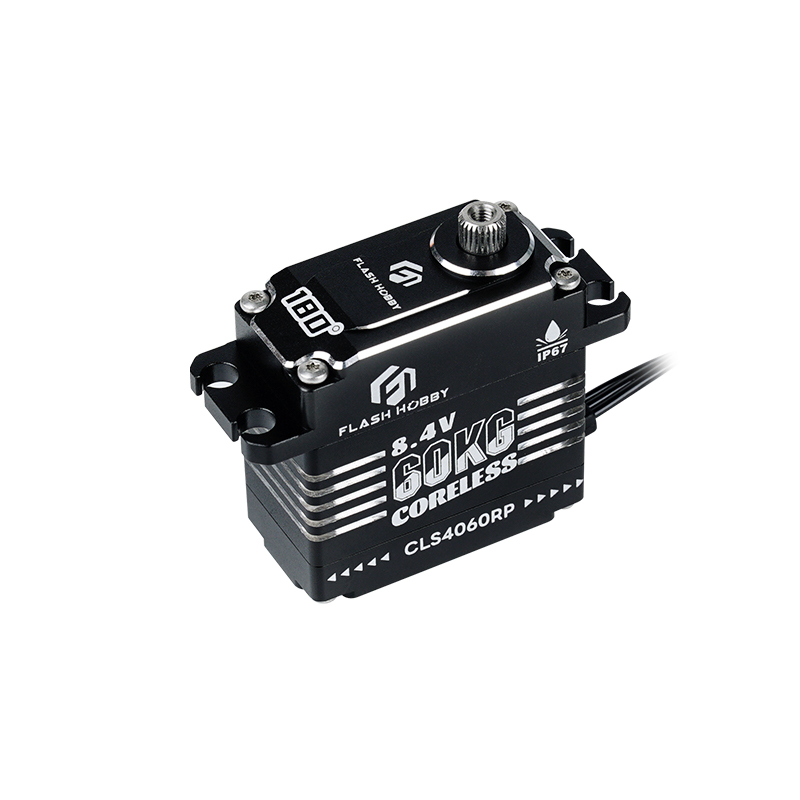Standard Servo: The Heart of Precision in Robotics and Automation
2025-03-12
Servos are essential components in modern robotics, automation, and a wide range of mechanical systems. Among the different types of servos available, the standard servo is one of the most widely used. This versatile and reliable device plays a crucial role in ensuring precision and control in various applications, from hobbyist projects to advanced industrial machinery.
In this blog, we will explore what a standard servo is, how it works, its uses, and why it is such a valuable tool in today’s technology-driven world.
What is a Standard Servo?
A standard servo is a small, compact motor used to control angular position, speed, and acceleration. It consists of a motor, gears, a potentiometer (position sensor), and a control circuit. The servo is designed to rotate a specific angle, usually between 0 and 180 degrees, and maintain that position until given a new command. This makes it ideal for tasks that require precise, repetitive movements.
Unlike regular motors that rotate continuously, standard servos are built to move in precise increments. They are often used in situations where the movement needs to be controlled with great accuracy, such as in steering mechanisms, robotic arms, camera focus systems, and model vehicles.
How Does a Standard Servo Work?
The operation of a standard servo is based on a feedback loop mechanism. Here’s a simplified explanation of how it works:
1. Control Signal: The servo receives a control signal, typically in the form of a pulse-width modulation (PWM) signal. This signal determines the desired angle the servo should rotate to. The duration of each pulse in the signal corresponds to the specific angle.
2. Motor Activation: The control signal activates the motor within the servo. The motor drives a set of gears that translate rotational movement into the desired angle.
3. Feedback Loop: Inside the servo, a potentiometer senses the current position of the motor’s shaft. The potentiometer sends feedback to the control circuit, which compares the actual position with the desired position. If there is a discrepancy, the control circuit adjusts the motor's movement to bring the servo shaft to the correct position.
4. Position Maintenance: Once the servo reaches the commanded position, it holds it there, continuously adjusting if needed to counteract external forces, ensuring precise and stable positioning.
Applications of Standard Servos
Standard servos are used in a wide variety of applications. Their precise control makes them ideal for systems where exact positioning is critical. Some of the common applications include:
1. Robotics
Robots rely heavily on servos for controlling joint movements, grippers, and other parts that require accurate and repetitive motions. In robotics, standard servos are used in the arms of robotic systems, allowing them to perform tasks such as picking up objects, assembling components, or performing complex actions in a controlled and predictable manner.
2. RC Models (Radio-Controlled Models)
Standard servos are commonly used in RC cars, airplanes, boats, and helicopters. In these models, the servo controls critical functions such as steering, throttle, and control surfaces, ensuring smooth and precise movements of the vehicle. Their compact size and efficient operation make them ideal for small-scale applications like RC models.
3. Industrial Automation
In manufacturing and industrial settings, servos are used in automated systems where precision and repeatability are essential. For example, servos are used in conveyor systems, CNC machines, and packaging lines to control the movement of parts and products. Their reliability ensures consistent performance in high-volume production environments.
4. Cameras and Optical Systems
Standard servos are also used in cameras and optical equipment to control focus, zoom, and positioning mechanisms. In cameras, the servo allows for smooth and precise focus adjustments, making it easier to capture sharp images and videos.
5. Aerospace and Defense
In aerospace and defense applications, standard servos are used in flight control systems, satellite positioning systems, and missile guidance systems. The high level of precision provided by servos ensures the accurate movement of critical components in these high-stakes environments.
Advantages of Standard Servos
1. Precision and Accuracy
Standard servos offer precise control over position and movement. This accuracy is crucial in applications such as robotics, where even a small deviation in movement could lead to errors in task execution.
2. Compact and Lightweight
Servos are relatively small and lightweight, making them ideal for applications where space is limited, such as in RC models or compact robotic systems. Their small form factor doesn’t compromise on performance, providing both efficiency and portability.
3. Reliability
Standard servos are known for their durability and reliability. They are built to handle continuous use, ensuring that they perform consistently over time without requiring frequent maintenance.
4. Easy Integration
Standard servos are easy to integrate into various systems, thanks to their simple control interface (typically PWM). This makes them a popular choice for DIY projects, hobbyists, and industrial applications alike.
5. Cost-Effective
Compared to other types of motors and actuators, standard servos are relatively inexpensive. Their affordability makes them accessible to hobbyists, small businesses, and large companies alike, enabling widespread use in numerous industries.
Choosing the Right Standard Servo
When selecting a standard servo, several factors should be considered to ensure that the servo is suitable for the intended application. These factors include:
- Torque: The amount of force the servo can exert. It is essential to choose a servo with adequate torque to handle the load it will be controlling.
- Speed: The speed at which the servo can rotate. Depending on the application, you may need a servo that moves quickly or one that operates more slowly for greater precision.
- Size: The physical dimensions of the servo are important, particularly for applications where space is limited.
- Voltage: Servos operate at different voltages, and it’s crucial to select one that matches the power supply available in your system.
Conclusion
Standard servos play a vital role in countless industries, offering precise, reliable, and cost-effective solutions for controlling movement and position. From robotics and automation to RC models and cameras, these devices have become indispensable for applications that require accuracy and efficiency.
Whether you’re a hobbyist building your first robot or an engineer designing an automated manufacturing line, the versatility of standard servos makes them an essential component in many systems. By understanding how they work and the benefits they offer, you can better appreciate their value and incorporate them into your projects to achieve outstanding performance and results.



